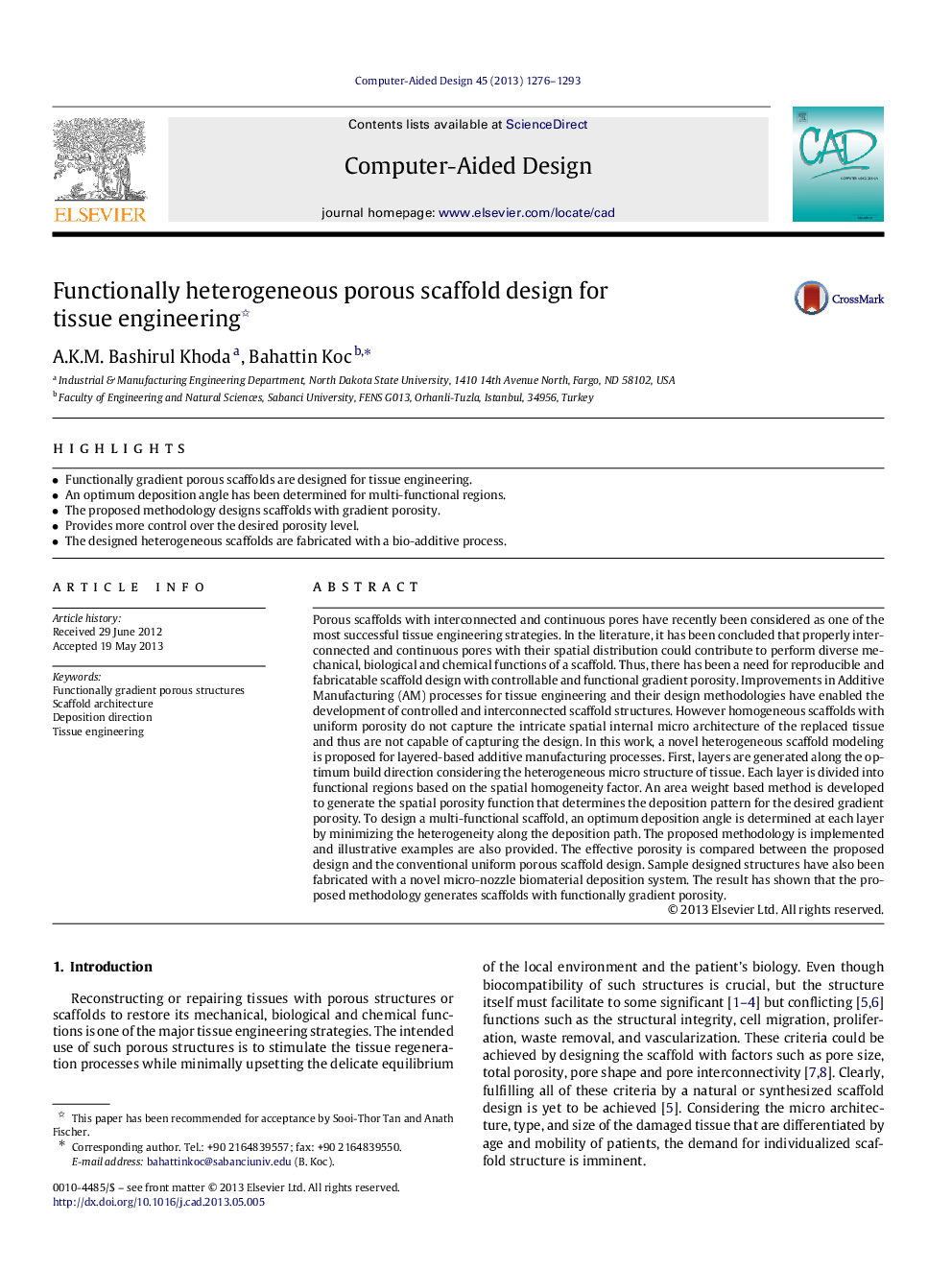| کد مقاله | کد نشریه | سال انتشار | مقاله انگلیسی | نسخه تمام متن |
|---|---|---|---|---|
| 440752 | 691265 | 2013 | 18 صفحه PDF | دانلود رایگان |

• Functionally gradient porous scaffolds are designed for tissue engineering.
• An optimum deposition angle has been determined for multi-functional regions.
• The proposed methodology designs scaffolds with gradient porosity.
• Provides more control over the desired porosity level.
• The designed heterogeneous scaffolds are fabricated with a bio-additive process.
Porous scaffolds with interconnected and continuous pores have recently been considered as one of the most successful tissue engineering strategies. In the literature, it has been concluded that properly interconnected and continuous pores with their spatial distribution could contribute to perform diverse mechanical, biological and chemical functions of a scaffold. Thus, there has been a need for reproducible and fabricatable scaffold design with controllable and functional gradient porosity. Improvements in Additive Manufacturing (AM) processes for tissue engineering and their design methodologies have enabled the development of controlled and interconnected scaffold structures. However homogeneous scaffolds with uniform porosity do not capture the intricate spatial internal micro architecture of the replaced tissue and thus are not capable of capturing the design. In this work, a novel heterogeneous scaffold modeling is proposed for layered-based additive manufacturing processes. First, layers are generated along the optimum build direction considering the heterogeneous micro structure of tissue. Each layer is divided into functional regions based on the spatial homogeneity factor. An area weight based method is developed to generate the spatial porosity function that determines the deposition pattern for the desired gradient porosity. To design a multi-functional scaffold, an optimum deposition angle is determined at each layer by minimizing the heterogeneity along the deposition path. The proposed methodology is implemented and illustrative examples are also provided. The effective porosity is compared between the proposed design and the conventional uniform porous scaffold design. Sample designed structures have also been fabricated with a novel micro-nozzle biomaterial deposition system. The result has shown that the proposed methodology generates scaffolds with functionally gradient porosity.
Journal: Computer-Aided Design - Volume 45, Issue 11, November 2013, Pages 1276–1293